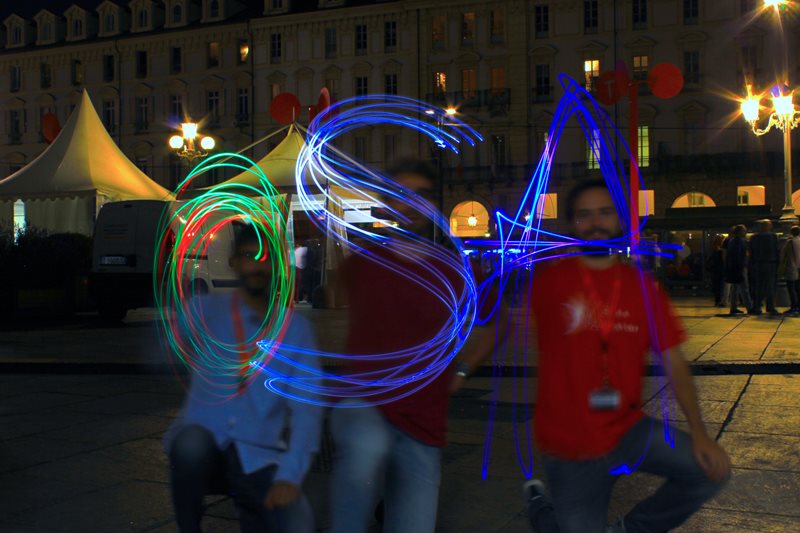Playing with Light
OSA Student Chapter Torino

The OSA Student Chapter Torino, on September 30th 2016, started the TOP-LUX initiative in the framework of the European Researcher’s Night 2016. The TOP-LUX (TOrino Photonics – Leveraging YoUth eXcellence) initiative, with which the OSA Student Chapter Torino aims at creating a series of educational events among schools of the Piemonte region, followed by a contest between them for educational projects related to Optics and Science.
The chapter’s initiative was bootstrapped during the last European Researchers’ Night (ERN), during which our chapter members showed experiments related to photonics to adults, university students, schools and kids and their families. The event took place in the beautiful Piazza Castello, one of the most iconic area of the first capital of Italy, Torino. In front of the amazing Palazzo Madama (UNESCO world heritage site since 1997), OSA Student Chapter Torino members interacted with around 1,500 people, showcasing experiments to explain the basics of the “Science of Light” and Photonics. Chapter members demonstrated how to bend a light ray by using water, replicating the famous John Tyndall’s “light guiding” experiment of 1870. The experiment, performed interactively with the visitors of the booth, was used to explain how optical fibers work, how they are used today to back haul Internet traffic, and how they are produced on a massive scale. Different types of optical fiber technologies were showcased to the visitors, allowing them to directly experience the whole production process, from preforms up to the final coated optical fiber. In another part of the booth, visitors were asked to make a glass rod “disappear”, by using a proper mixture of water and polymeric oil. The experiment was used to teach to the general public the basic concepts of reflection and refraction of light. Finally, visitors were able to “draw with light”. By moving colored LEDs in front of a digital single lens reflex (DSLR) camera, people were able to use light as a marker. Thanks to the long exposure times of the camera, the DSLR sensor was able to catch the “light strokes” of the improvised artists so as to create a “light painting”. In this way, visitors travel through again the steps of the one the fathers of cubism, Pablo Picasso. The famous artist was introduced to light painting in 1949 and produced several paintings, the most famous being “Pablo Picasso draws a centaur”. With this historical, yet scientifically aware activity, the visitors of the booth were able to understand the basic principle of modern photography equipment and techniques.
We would like to thank OSA for providing us with the Centennial Special Events Grant to make this event possible!
